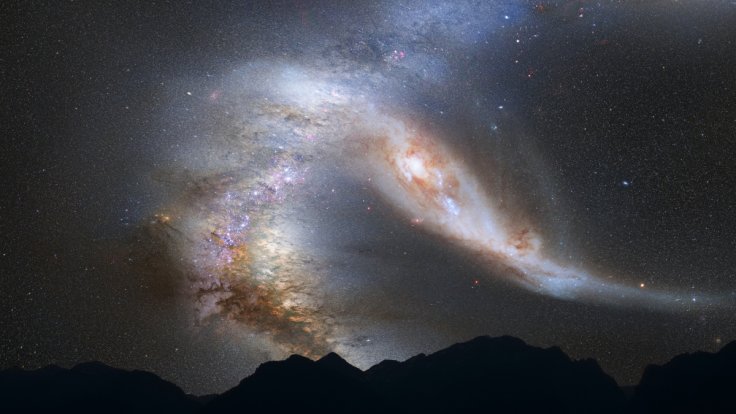
Based on reconstruction of the motion of galaxies in the last 13 billion years, astronomers predict that the Milky Way of ours and Andromeda galaxy, each with 2 trillion times the mass of the Sun, are destined to collide and merge in 5 billion years.
The team constisting of astronomers from Maryland, Hawaii, Israel and France has produced the most detailed map ever of the orbits of galaxies around the solar system projecting the possible past motions of almost 1,400 galaxies within 100 million light years from the Milky Way, in which our solar system is a part.
The reconstructed motions of the galaxies in the mapped area have the Virgo Cluster as the main gravitational attractor, with 600 trillion times the mass of the Sun, 50 million light years away from us. More than a thousand galaxies have already fallen into the Virgo Cluster, while in the future all galaxies that are currently within 40 million light years of the cluster will be captured, they said.
Though our Milky Way galaxy lies outside the capture zone of Virgo Cluster, it is destined to collide with Andromeda galaxy in 5 billion years, they noted based on the projections.
"For the first time, we are not only visualizing the detailed structure of our Local Supercluster of galaxies but we are seeing how the structure developed over the history of the universe," said co-author Brent Tully from the University of Hawaii's Institute for Astronomy.
These mergers of galaxies indicate two major flow patterns within the universe. All galaxies in one hemisphere of the region, including our own Milky Way, are moving toward a single flat sheet. They compared the motion with a flowing leaf in a river that gravitates toward other huge attractors.
A video showing the representations of the orbits provides an interactive model allowing a viewer to pan, zoom, rotate and pause or activate the time evolution of movement along orbits.









